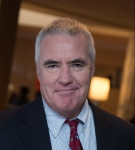
Jackson Williams, DPC Vice President of Public Policy
Payment bundling is a technique Medicare uses to increase efficiency and reduce low-value care during a treatment episode. Congress adopted a payment bundle for dialysis a decade ago and for several years it worked well. But trade-offs are inherent in bundles and there is always potential for a negative impact on consumers. This negative experience has arrived for dialysis patients in the form of non—prescribing of new drugs. Patients are missing out on improvements to their health and quality of life.
A bundled payment sets a maximum price for all the items and services involved in a treatment or episode. When those items can no longer be billed separately, they can’t serve as additional profit centers for providers, nor can providers be indifferent to amounts paid to other providers or suppliers. The provider is incentivized to organize care efficiently and minimize their costs because it keeps the difference between its costs and Medicare’s price.
Patients can benefit when potentially dangerous, separately billable items are no longer provided. Dialysis services were bundled because when epo was billed separately, some dialysis clinics provided more than was necessary. Bundling can also reduce unnecessary scans that needlessly expose patients to radiation.
But by bluntly changing financial incentives to discourage provision of ancillary items, bundles don’t necessarily distinguish between wasteful or dangerous items and items that are necessary for patients. When expensive new items are not paid for separately, the provider—in this case, the dialysis clinic—is likely to lose money and become unprofitable if it offers the items on an unrealistic budget.
The problem with the End Stage Renal Disease (ESRD) bundle is that what is efficient doesn’t always match the interests of the patient. The ESRD provider, while paid per treatment, is expected to quarterback care longitudinally, from incidence to transplant or end-of-life, to include ongoing education, dietary advice, anemia, phosphorus control, and many other aspects of kidney failure. New renal products that provide quality-of-life gains to patients and/or efficiencies to Medicare expenditures outside of dialysis expenditures represent only costs to the dialysis provider.
Medicare tried to address this problem with what it calls a Transitional Drug Add-on Payment Adjustment (TDAPA) for new drugs for dialysis patients. It pays the cost of a new drug on an individual patient basis for two years, and at the end of two years adds up the money spent across patients who received the drug and then divides it across all dialysis patients to modestly increase the regular payment.
This method could work for inexpensive drugs that all patients get. But it doesn’t work for expensive drugs that only a smaller number of patients get. Complicating things further is that unless every dialysis provider offers the new drug to patients using identical prescribing guidelines, some providers will be financial winners and losers when the two-year period ends. Under these circumstances, the rational reaction for providers and doctors is to not adopt the new drug.
The typical prescribing scenario in Medicare is that doctors have no disincentive to prescribe and may be incentivized to overprescribe. When prescriptions are paid for by a Part D prescription drug plan (PDP), PDPs can use formularies or prior authorization to restrict expensive drugs. In such cases, doctors act as advocates for their patients in obtaining the drug, and plans are the entity incentivized to contain costs.
The ESRD bundle replaces the traditional doctor/patient relationship with a new one—the nephrologist, usually in a joint venture with the dialysis clinic and a gatekeeper incentivized to keep utilization of bundled drugs low, and the Medicare program, which is primarily interested in minimizing ESRD expenditures. The patient is removed from the equation, because he or she is never informed about the availability of new drugs by nephrologists.
Medicare’s temporary payment, instead of mitigating the perverse incentives and uncertainties inherent in a bundling arrangement, instead exacerbates them. This has resulted in bleak prospects for new drugs being developed for dialysis patients:
- Cara Therapeutics has abandoned its renal activities after the failed launch of Korsuva and may be heading for bankruptcy. This means patients with pruritis have no access to an effective treatment for that condition. Empirical research has found a prevalence of moderate to severe pruritis among dialysis patients of 33 percent, but Korsuva has been dispensed to fewer than one percent of patients.
- Parsabiv is a new calcimimetic. During the 2019-2020 period, when a TDAPA add-on payment was made, 5,105 of 34,924 patients on dialysis (14.2%) received Parsabiv each month, according to a study by Stuart M. Sprague of NorthShore University HealthSystem. After January 2021 when the temporary payment ended, only 217 of those patients (0.7%) were receiving Parsabiv each month. Mean monthly PTH values increased from 483 pg/mL before the policy change to 544 pg/mL after the policy change. Among the 3,560 patients who discontinued Parsabiv when the payment policy changed in January 2021, mean monthly PTH increased from 579 to 745 pg/mL.
- GSK recently filed with the FDA to remove Jesduvroq, an oral HIF-PHI, from the market due to the inadequate TDAPA and post-TDAPA reimbursement, meaning one fewer option for patients who don’t respond to ESAs.
- Ardelyx, manufacturer of the drug Xphozah, has filed a lawsuit against CMS rather than accepting TDAPA with its perverse dynamics that all but preclude profitability. This is a blow to patients with inadequate response to phosphate binders or who are intolerant of any dose of phosphate binder therapy.
These are products on which many millions of dollars were invested to improve kidney care. This negative experience means venture capital is unlikely to make such investments in the future.
DefenCath, CorMedix’s catheter lock solution, started its TDAPA period on July 1. This drug has promise to reduce infections in dialysis patients. There remains uncertainty about its uptake, given that costs are borne by dialysis organizations while the benefits—reduced infections and hospitalizations—accrue mostly to patients and the Medicare Trust Fund.
Akebia’s Vafseo, an oral HIF-PHI to treat anemia in dialysis patients, started its TDAPA period in January 2025 after being approved several months ago. This drug could reduce transfusions for patients who don’t respond to ESAs, but again, that is a benefit to patients and to Medicare, not to the provider. Unfortunately, there appear to be no more new innovations in the ESRD drug pipeline.
DPC believes that drug manufacturers must be compensated in line with the value they offer to patients and the Medicare system, and providers should be held harmless when they do the right thing. This means that for those expensive products needed by a minority of patients, the only way to guarantee access will be individual-level reimbursement in full, not fractional reimbursement across the entire population of patients. DPC is working with dialysis providers, nephrologists, and drug manufacturers through a broad coalition, Kidney Care Partners, to pass legislation to fix this problem.




